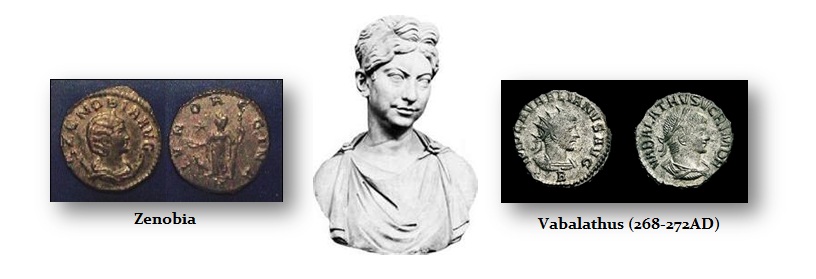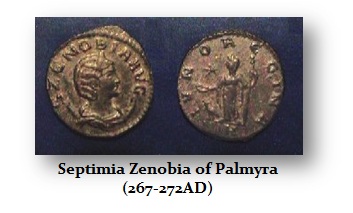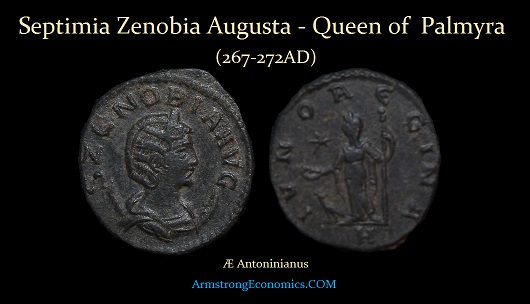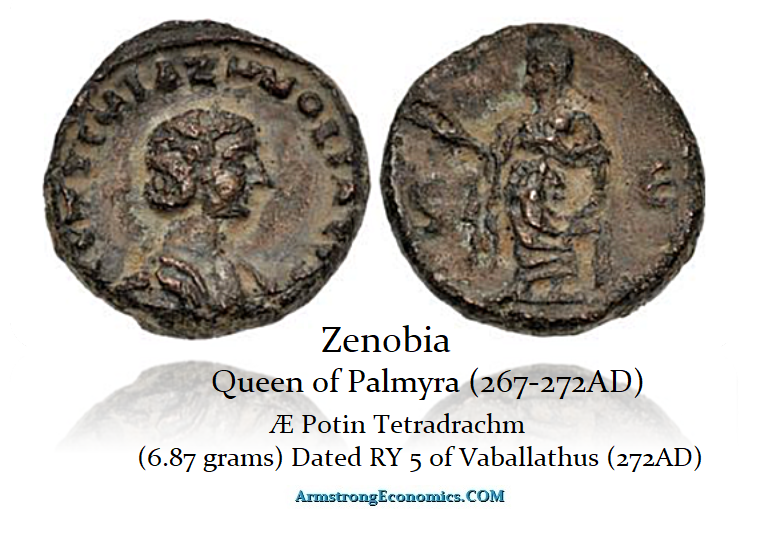Septimia Zenobia
(271-272AD)
Æ Antoninianus as Augusta
Queen of Palmyra
Mother of Vabalathus
Eastern Usurper of Rome
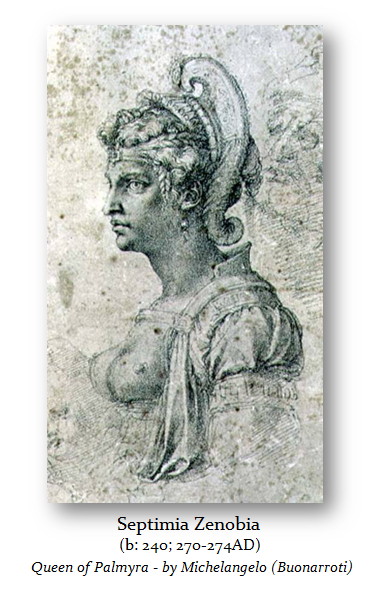 Septimia Zenobia was the second wife of Odenathus, king of Palmyra. Zenobia had taken over the government of Palmyra following her husband’s assassination in 267 AD. She successfully defeated the attempts of Emperor Gallienus (253-268AD) to retake the lost Eastern provinces of the Roman Empire. During the reign of Claudius II Gothicus (268-270AD), Zenobia even managed to extend her eastern empire to include Egypt and part of Asia Minor. She thus began to issue coinage from the famous city of Alexandria in Egypt.
Septimia Zenobia was the second wife of Odenathus, king of Palmyra. Zenobia had taken over the government of Palmyra following her husband’s assassination in 267 AD. She successfully defeated the attempts of Emperor Gallienus (253-268AD) to retake the lost Eastern provinces of the Roman Empire. During the reign of Claudius II Gothicus (268-270AD), Zenobia even managed to extend her eastern empire to include Egypt and part of Asia Minor. She thus began to issue coinage from the famous city of Alexandria in Egypt.
Zenobia was no doubt a very ambitious woman. Eventually, Zenobia extended her titles, which had been granted to her husband by the Romans, to include her son Vabalathus, who became her joint ruler in 271 AD. After being refused by the emperors Gallienus and Claudius II, these titles were granted by Aurelian (270-275AD). Zenobia celebrated this event by issuing double-headed coinage portraying her son, Vabalathus (271-272AD), as Vir Clarissimus, Rex, Imperator, Dux Romanorum on the reverse of her antoninianus and Aurelian on the obverse.
In 271 AD, Zenobia took a bold step. She raised her son to the rank of Augustus, which was an open challenge to the then Emperor Aurelian, leaving the emperor little choice. On her coinage, she, too, took the title of Augusta. Aurelian marched against Zenobia and her son.
In the following battle, Zenobia was soundly defeated by Aurelian’s army. Seeking a glorious triumph, Zenobia was captured and taken to Rome for display to the Roman people. Aurelian later gave Zenobia a villa near Tibur, where she spent the rest of her life away from political intrigue.
Monetary System
Mints: Palmyra, Alexandria (Egypt)
Obverse Legends:
S ZENOBIA AVG
DENOMINATIONS
as Augusta
Æ Antoninianus
Æ Tetradrachm (Egypt)

